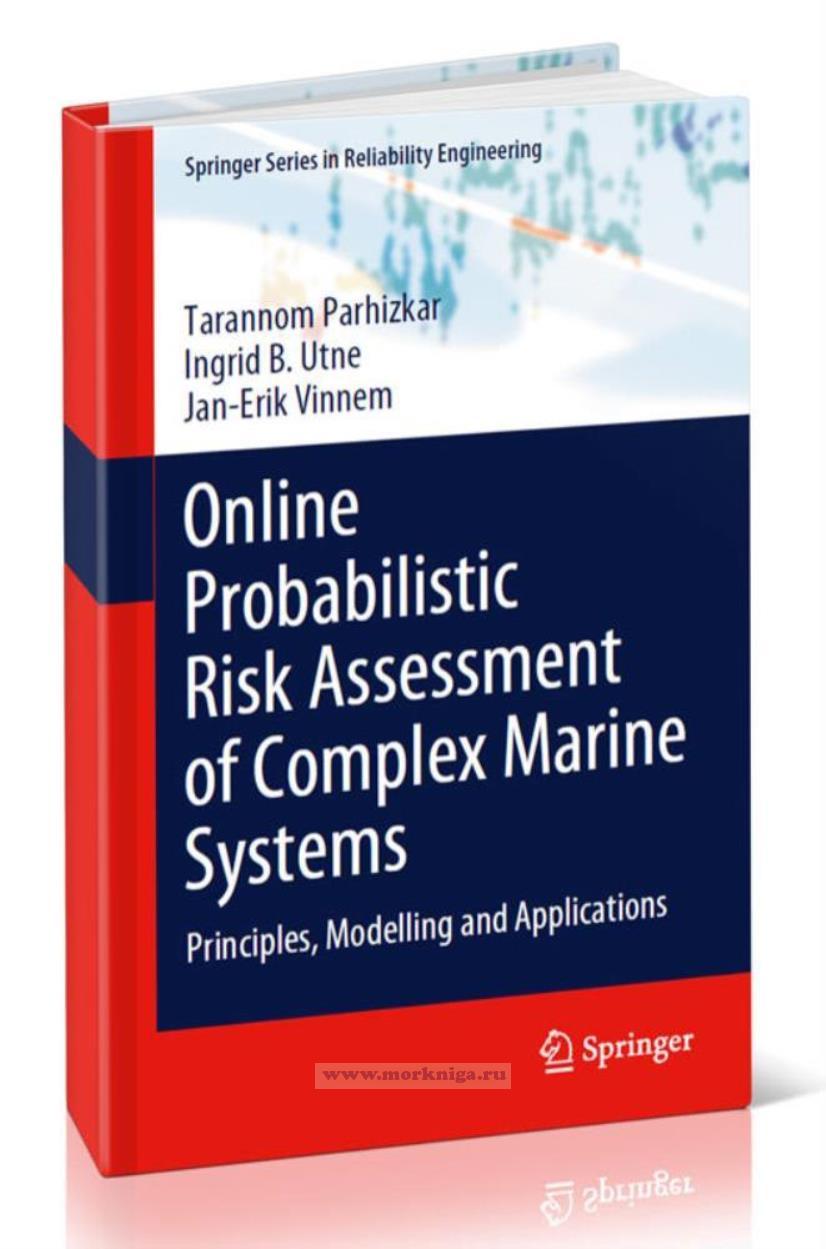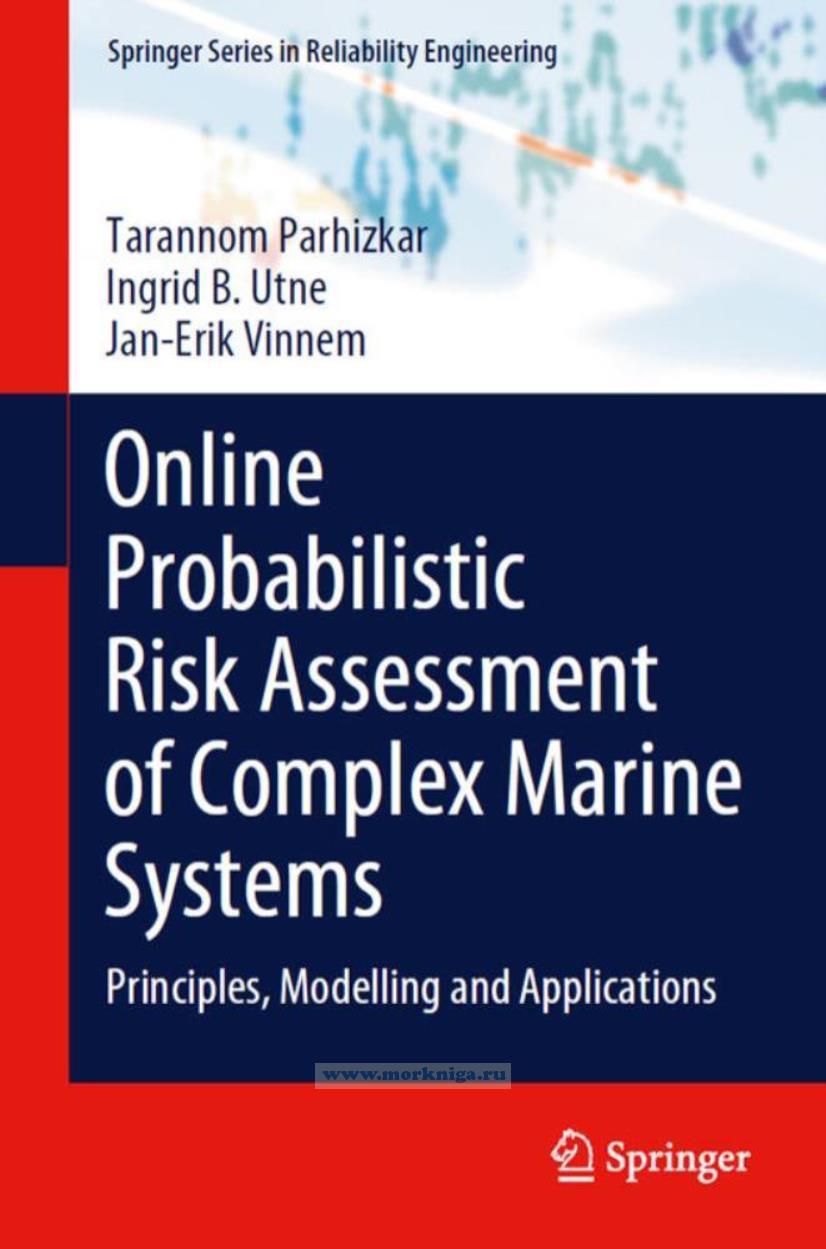Online Probabilistic Risk Assessment of Complex Marine Systems. Principles, Modelling and Applications/Вероятностная онлайн-оценка рисков сложных морских систем. Принципы, моделирование и приложения
Издание на английском языке
This book provides a general framework for online risk assessment considering human, software, and hardware interactions in automated and autonomous complex systems, with particular focus on marine applications. There is a significant interest in industry, authorities, and academia on the prospects of complex autonomous systems. Much work focuses on technological developments and discussions on economic, legal, and safety implications. There has been less focus so far on risk assessment and modeling concerning the conceptualization, design, and, in particular on the safe operation of these systems.
Contents
1 Introduction
1.1 Problem Statement
1.2 Background
1.3 Safety of Autonomous Marine and Maritime Systems
1.4 Dynamic Positioning Systems and Safety
1.4.1 Background
1.4.2 Safety
1.4.3 Incidents in the Offshore Petroleum Industry
1.5 Shortcomings with Present Works and Future Needs
1.6 Objectives and Limitations
1.7 Overview of Book Structure
References
2 Dynamic Probabilistic Risk Assessment
2.1 Probabilistic Risk Assessment
2.2 Dynamic, Real-Time, and Online Risk Assessments
2.2.1 Dynamic Risk Assessment
2.2.2 Real-Time Risk Assessment
2.2.3 Online Risk Assessment
2.3 Methods for Online Risk Assessment
2.3.1 Hazard Identification
2.3.2 Event Sequence Diagrams (ESD)
2.3.3 Fault Tree Analysis (FTA)
2.3.4 Bayesian Networks
2.3.5 Hybrid Methods
2.3.6 Hybrid Risk Assessment Model—An Example
2.4 Dynamic Probabilistic Risk Assessment Methods
2.4.1 Dynamic Event Sequence Diagram (ESD)/Dynamic Event Trees (ET)
2.4.2 Markov Chain (Continuous Event Tree)
2.4.3 Dynamic Fault Tree
2.4.4 Dynamic Bayesian Network (DBN)
2.5 Advanced Online Dynamic Probabilistic Risk Assessment Methods
2.5.1 Predictive Models Based on Machine Learning Methods
2.5.2 Optimization Methods
References
3 Data Sources and Development for Online Risk Quantification
3.1 Data Flow of Online Risk Assessment
3.2 Data Collection and Preparation
3.3 Quantifying the Probability or Frequency of Basic Events
References
4 Human, Hardware, and Software Interactions in Risk Assessment
4.1 Risk of Human, Hardware, and Software Failures
4.2 Risk Assessment of Software
4.2.1 Step 1: Defining Software Functionalities
4.2.2 Step 2: Developing State Logic Reasoner
4.2.3 Step 3: Defining Software Structural Hierarchy
4.2.4 Step 4: Developing Component-Functionality Matrix
4.2.5 Step 5: Defining Software State Transitions Diagram
4.2.6 Step 6: Generating Software Event Sequence Diagram
4.2.7 Cybersecurity in Risk Assessment
4.3 Risk Assessment of Human and Organizational Factors
4.4 An Online Risk Assessment Framework for Considering Human, Hardware, and Software Failure Interactions
References
5 Human Factor Analysis and Quantification
5.1 Background
5.2 Understanding Operators/Crew Tasks
5.3 Performance Shaping Factors’ Identification
5.3.1 Training and Experience
5.3.2 Procedures
5.3.3 Ergonomics and Human–Machine Interface (HMI)
5.3.4 Available Time
5.3.5 Task Complexity
5.3.6 Stress Level
5.3.7 Fitness for Duty
5.3.8 Work Process
5.3.9 Evaluating PSFs
5.4 Skill-Based Human Reliability Analysis—A DP Example
5.5 Cognitive-Based Human Reliability Analysis
5.5.1 Information Filtering
5.5.2 Decision-Making Process
5.5.3 Action Execution Process
5.6 Human Response Time Model
5.6.1 Detection
5.6.2 Diagnosis
5.6.3 Decision-Making
5.6.4 Execution
References
6 Dynamic Risk Assessment to Assist Decision-Making in Emergency Situations
6.1 Dynamic Probabilistic Risk Model of Decision-Making in Emergencies
6.2 Supervised Failure Scenario Generation in Emergencies
References
7 Case Studies
7.1 Application 1: Loss of Position of a Mobile Offshore Drilling Unit
7.2 Application 2: Collision of a DP Shuttle Tanker
7.3 Application 3: Loss of Position of a DP Shuttle Tanker
7.4 Application 4: Collision Between a Supply Ship and a Petroleum Installation
References
8 Challenges of Online Dynamic Probabilistic Risk Assessment and Possible Solutions
8.1 Risk Assessment Challenges with Autonomous Systems
8.2 Online Data Collection
8.3 Uncertainties
8.4 Complexity and Execution Time
8.5 Applicability and Connection to Decision Support
References
9 Attachment A—Fault Trees for Different Dynamic Positioning Systems
Glossary
References
Index

